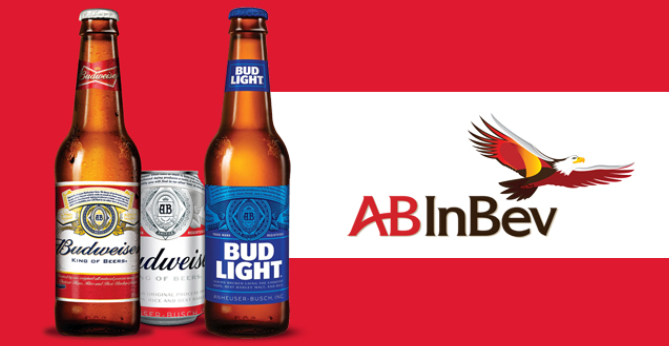AB InBev’s $6 Billion Comeback: How the Beer Giant Beat Expectations and Won Back Investors
Anheuser-Busch InBev (AB InBev), the world’s largest brewer and parent company of Budweiser, Corona, and Stella Artois, stunned markets this week with a blockbuster third-quarter report. The company not only outperformed profit expectations but also announced its first interim dividend since 2019 — a clear signal that the post-pandemic recovery has shifted into high gear.
According to a Reuters report, the brewing giant posted a 3.3 % rise in organic operating profit, easily beating analyst forecasts of under 1 %. Revenue edged up 0.9 %, and strong margin control helped the brewer absorb ongoing volume declines in key markets like China and Brazil.
CEO Michel Doukeris struck an optimistic tone, saying, “Our business delivered continued top- and bottom-line growth even as we navigated a dynamic consumer environment.”
A Reward for Shareholders: $6 Billion Buyback and Dividend Revival
In a move that immediately caught Wall Street’s attention, AB InBev announced a $6 billion share-buyback programme and an interim dividend of €0.15 per share, its first in six years. The dividend, confirmed by GuruFocus, will be paid out in 2025, marking a decisive pivot from debt repayment toward direct shareholder value.
The company’s focus on rewarding investors reflects newfound confidence in its balance sheet. AB InBev spent years reducing its $80 billion debt pile following its 2016 takeover of SABMiller, but with free cash flow improving and interest costs easing, the world’s largest beer maker appears ready to toast a new era of financial stability.
“Shareholders have been waiting for this moment,” said Michael Hewson, chief market analyst at CMC Markets. “A buyback of this size tells us AB InBev is not just stabilising — it’s signaling it’s back in growth mode.”
Volume Decline: The Bitter Aftertaste of Global Shifts
Despite the upbeat headline numbers, total global volumes dropped 3.7 %, underscoring the company’s ongoing battle with changing drinking habits and economic headwinds.
The fall was sharper in Latin America and China two regions that once powered AB InBev’s growth. Brazil’s weak consumer sentiment hit beer demand, while China’s on-premise consumption has yet to fully recover.
In North America, where AB InBev continues to rebuild the Bud Light brand after last year’s high-profile backlash, results were mixed. Michelob Ultra, however, became the No. 1 beer by volume in the U.S., demonstrating that consumers are still gravitating toward lower-calorie, premium alternatives.
From Beer Giant to Brand Portfolio Powerhouse
Beyond beer, AB InBev’s strategy now hinges on diversification and premiumisation. The company’s premium and super-premium brands — including Stella Artois, Leffe, and Corona Cero saw double-digit revenue growth globally.
In addition, AB InBev’s non-alcoholic and “beyond-beer” segments are booming, a trend driven by younger consumers seeking wellness-oriented options. “The modern drinker doesn’t want just a beer they want an experience,” Doukeris said earlier this year.
The company has also invested heavily in digital direct-to-consumer platforms and data analytics, using AI-driven insights to tailor promotions and predict demand a move that mirrors its success in Brazil’s “BEES” B2B marketplace, now a global model for beverage distribution.
Economic and Strategic Implications
From a financial perspective, AB InBev’s latest results reflect a return to fundamentals: efficiency, cash discipline, and brand repositioning.
Yet the announcement carries broader implications. Consumer trends are shifting rapidly — and premium alcohol remains one of the few categories resilient to inflation. For investors, AB InBev’s renewed focus on margins rather than volume marks a clear strategic evolution.
“The company has essentially reinvented itself from a global acquirer to a precision-focused operator,” noted Neil Saunders, Managing Director of GlobalData Retail. “That is how legacy consumer brands will survive in the AI and data era.”
Risks on the Horizon
Even with these successes, AB InBev faces challenges. Its reliance on emerging markets means vulnerability to currency fluctuations and regional slowdowns. Rising competition from craft breweries and hard-seltzer brands also threatens to erode market share.
Moreover, with the company now returning cash to shareholders, investors will expect sustained earnings growth to justify the new capital structure.
A Toast to the Future
The numbers tell a story of revival. After years of reputational turbulence and pandemic-driven shocks, AB InBev is once again pouring confidence into its financial foundation. The question now is whether the brewer can sustain growth in an era where consumers drink less — but demand more value, experience, and authenticity.
As of October 2025, the market seems convinced: AB InBev’s shares have rebounded more than 18 % year-to-date. According to analysis reviewed by CEO Today, the brewer’s shift from global dominance to strategic efficiency could become a blueprint for post-pandemic corporate recovery.
FAQ – AB InBev’s Q3 2025 Results
What were AB InBev’s Q3 profits?
The company reported a 3.3 % rise in organic operating profit, outperforming forecasts of under 1 %.
How large is AB InBev’s new share-buyback?
AB InBev announced a $6 billion buyback over two years, alongside a €0.15 interim dividend.
Why are volumes still falling?
Economic pressures in Brazil and weaker on-premise consumption in China have weighed on global sales volumes.














